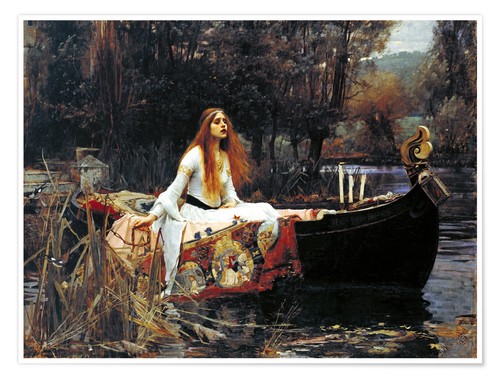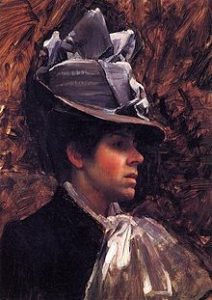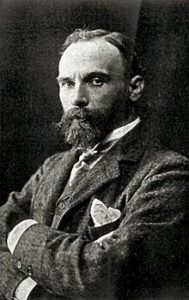
VICTORIAN PAINTERS: JOHN WATERHOUSE
In the first story of my book Mary Copeland: Victorian Detective, the main character comes into contact with John Waterhouse and his wife Esther Kenworthy. Waterhouse is a well-known painter of the late nineteenth and early twentieth centuries. He is one of the followers of the Pre-Raphaelite painters. The Pre-Raphaelite Brotherhood was founded in 1848 by some young artists, such as William Holman Hunt, John Everett Millais and Dante Gabriel Rossetti. They called themselves that because they found the work of the Italian painter Raphael too exuberant and they longed for the more medieval, simple compositions and a very detailed and realistic way of painting. They were also among the first painters to paint in nature and not just stay in their studio. After 1860, the movement gradually transitioned into a form of aestheticism, also known as the ‘aesthetic movement’. Important exponents of this second wave were again Dante Gabriel Rossetti, but also Edward Burne-Jones, William Morris and Frederic Leighton and later also John Collier and, yes, John William Waterhouse.
Waterhouse’s work is characterized by coloured, charged images of women. This earned him a lot of appreciation in England and at the World Exhibitions in the nineteenth century. Waterhouse was inspired by writers such as Ovid, Keats, Boccaccio, Shakespeare, Tennyson and Dante. Often these were praises from his passion for women, water, nature, love and death, often with dark undertones. One of his most famous paintings is The Lady of Shalott, painted in response to a poem by Tennyson. The painting has been the inspiration for the first story in my book for me and it is depicted in this blog.
John Waterhouse was married to Esther Kenworthy. At first they lived in a purpose-built colony for artists in Primrose Hill, where the houses had studios. Around 1900 they moved to Saint John’s Wood. Esther Kenworthy Waterhouse, as she was called, painted still lifes of flowers and exhibited at both The Royal Academy and the Royal Society of British Artists in London. The couple remained childless. John Waterhouse died in 1917 and Esther in 1944. They are buried in Kensal Green Cemetery. Their portraits are shown here.
To learn more about his work, click here: https://en.wikipedia.org/wiki/John_William_Waterhouse.
Of course I won’t reveal what role they play in the book. Then you really have to read it for yourself…
With kind regards,
Robbert Jan


Post Views : 302